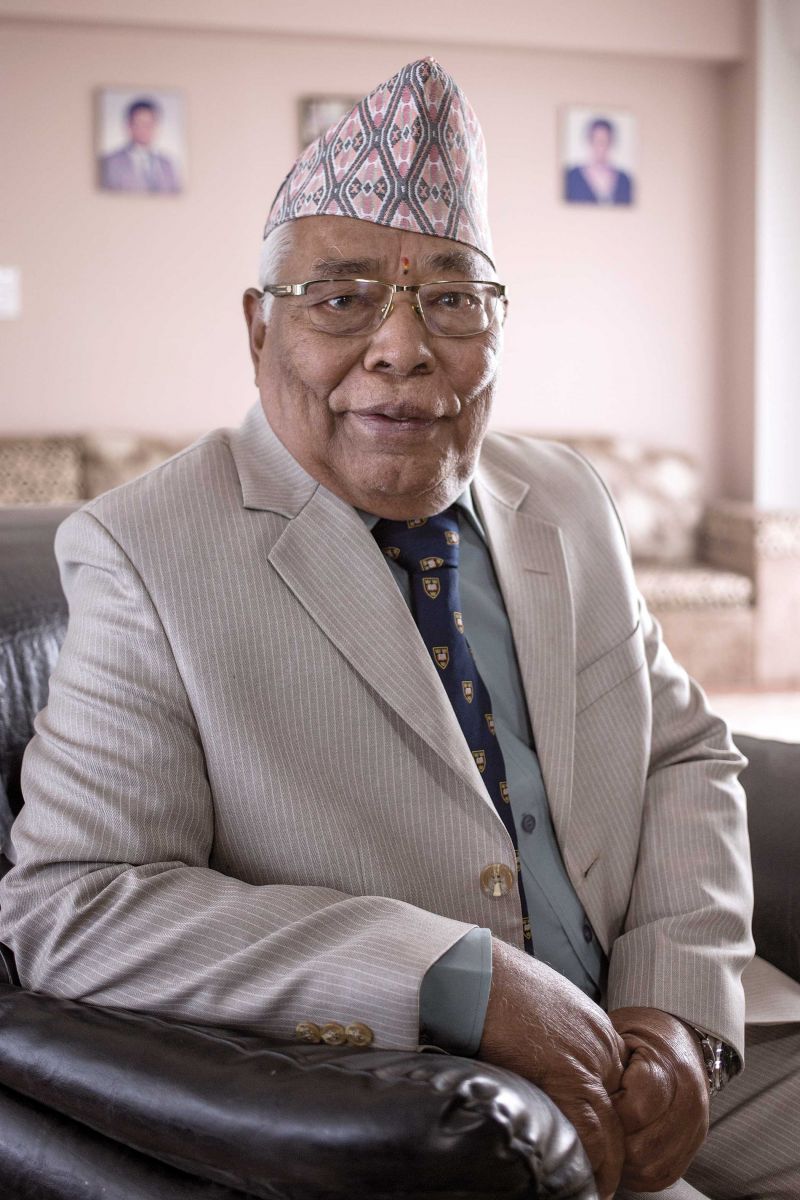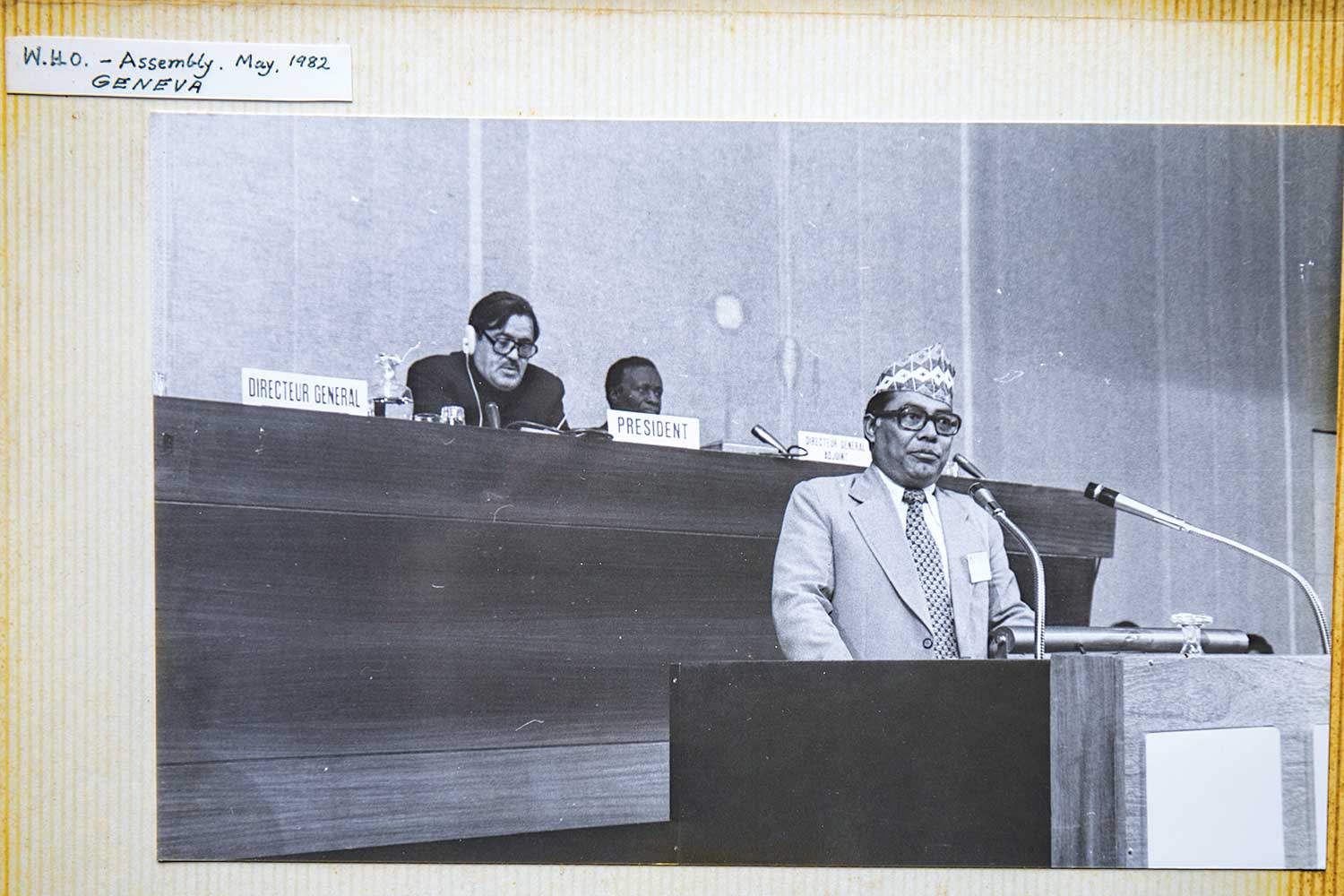“One should try to know everythingof something, and something of everything”—so says Prof. Upendra Man Malla, who did his thesis on “Human Geography of Nepal Valley” a long time ago, in 1957. Well, seeing as to how he was a professor on the subject most of his life, besides doing a few stints in government service during the days when the country was yet to be divided into convenient units for administration and development,and when it was, being a leading player in the process, one can assume that the professor is true to his favorite saying.
 Talking to him, one definitely is convinced that he knows a lot about the country’s history. He rattles off names of kings, princes, prime ministers, ministers, academics, and even some generals, when relating some interesting incidents of that time. Like most folks of the old guard, he speaks highly of King Mahendra, undoubtedly the central figure of the earlier times, and relates a story: “Once, King Tribhuvan and King Mahendra were having a tete-a-tetewith Indian leaders Jawaharlal Nehru and Vallabhbhai Patel, and the latter put forward the idea of amalgamating Nepal into India. King Tribhuvanjust smiled and remained silent, the then Crown Prince, however, said that he was agreeable to the idea, provided India accepted Nepal’s flag as the national flag!
Talking to him, one definitely is convinced that he knows a lot about the country’s history. He rattles off names of kings, princes, prime ministers, ministers, academics, and even some generals, when relating some interesting incidents of that time. Like most folks of the old guard, he speaks highly of King Mahendra, undoubtedly the central figure of the earlier times, and relates a story: “Once, King Tribhuvan and King Mahendra were having a tete-a-tetewith Indian leaders Jawaharlal Nehru and Vallabhbhai Patel, and the latter put forward the idea of amalgamating Nepal into India. King Tribhuvanjust smiled and remained silent, the then Crown Prince, however, said that he was agreeable to the idea, provided India accepted Nepal’s flag as the national flag!
He admits that he is not sure about the authenticity of this story, but relates another that he vouches as true: “When the Arniko Highway was being planned, India objected very strongly, saying that it would bring communism into the country. King Mahendra is reported to have exclaimed, ‘I didn’t know that communism traveled on wheels over a road!’”
Such tidbits added spice to our conversation, which otherwise was pretty academic. The eldest of four brothers and four sisters, Mr. Malla has just entered his eighty-seventh year. His first job wasin 1954 as an officer on special duty at the Ministry of Planning and Development, which he did for only about three months, then he was shifted over to the Ministry of Industry and Commerce as Deputy Secretary. “I also officiated as the Secretary sometimes during my fourteen months’ tenure there,” he reveals. Next, it was off to Oxford University, where he earned his B. Litt.in Geography (1955-1957).
On returning home, he started teaching at Tri Chandra College, and this was a long stint (1957-1977), after which he joinedTribhuvan University as a professor after resigning from his earlier post of Senior Professor in HMG. Earlier, from 1973 to1976, he was the first Dean of Humanities and Social Sciences, on deputation to the university. This was the time when the semester system was introduced in the country’s educational sector, and no doubt, Mr. Mallawas directly involved in its implementation.
This is what he says about it: “The semester system was dropped soon in 1979, although ironically, people are now saying that it should not have beendone so since it improves education.” One of the alleged drawbacks was students having to give tests on a frequent basis, and about this, he retorts exasperatedly, “What’s wrong with testing to see if the student has absorbed what has been taught? I believe that it was an excellent system, and it not only improved students’ learning, but also ensured that the teachers were disciplined and up-to-date on their subjects.”
He adds, “Nowadays, there are always complaints about teachers being absent much of the time!” He also remembers some parents complaining that the semester system didn’t afford enough time for their daughters to do household work like cooking and so forth. “My reply was: Are you sending your daughter to college so that she can cook at home?”
 Mr. Malla makes another intriguing comment, “I believe that the government was thinking of not allowing private colleges, and instead, focus on fulfilling the demand through the existing institutions. It was a question of not having the required manpower, which I believe is the main disadvantage today, too, with so many professional colleges around.” Having made his grievance felt, he continues, “If you remember, another plus point of the then education policy was that it also included in schools a compulsory vocational training subject, something that is being felt as a dire need today.”
Mr. Malla makes another intriguing comment, “I believe that the government was thinking of not allowing private colleges, and instead, focus on fulfilling the demand through the existing institutions. It was a question of not having the required manpower, which I believe is the main disadvantage today, too, with so many professional colleges around.” Having made his grievance felt, he continues, “If you remember, another plus point of the then education policy was that it also included in schools a compulsory vocational training subject, something that is being felt as a dire need today.”
Mr. Malla was instrumental in starting master’s degree studies in Geography (in 1960) at the university. He says that geography has many branches, and that human geography means the activities of humans in relation to the environment, which is pretty all-encompassing if one were to think about it. One of the highlights of his life was being involved in the making of the fourteen zones (anchals) and seventy-five districts (zillas) of the country.
He says modestly, “Although I was the member-secretary of the committee to implement this, I have always liked to give credit to the committeeas a whole.” He also adds, “Actually, I did not think that we needed so many zones and districts. In my view, seven zones and forty-five districts would have been enough. That way, each would have included the mountain, hill, and terai regions.” He explains more about the modus operandi at the time: “Among the committee members, General ChettraBikramRana had traveled much around the country,and he contributed significantly to our work.”
Coming to present times, he is not a believer in federalism in Nepal, as such, and recalls a seminar organized by Nepal Geographical Society (NGS)on the issue in 2009, where the decision was made to suggest that the five development regions should be kept intactif federalism were to be adopted eventually inthe Constitution. He elucidates, “At the time when the National Planning Commission (NPC) was creating the development regions, at first, they decided on four development regions. Later, KingBirendra pointed out that the Far Western region was disproportionately large in comparison to the others. Accordingly, the then Far-Western Development Region was divided into two parts, and the western one was temporarily named Fifth Region. Later, they were known as Mid-Western Region and Far Western Region.”
Listening to all this from someone who was himself in the midst of great changes, one gets the distinct feeling of reliving history, and that is why one has to be thankful to Mr. Upendra Man Malla for allowing us such a close peek into the past. Talking about geography, in particular, he explains that geography is not only about soil, rocks, and rivers; it is much more than that. As an example among many in various spheres, he points out the critical aspect of the country as far as its geo-politics is concerned. “Geo-politically, Nepal is in a very fragile state, sandwiched between two fast-rising superpowers that have been not in good terms historically with each other. Both are looking for opportunities to demonstrate their dominance. Even the distant power blocks of America and Europe are watching the situation of Nepal for their political interests. This has put us in a very delicate position, and we have to tread very carefully.”
Indeed, geography is much more than just soil, rocks, and rivers, and this is something Mr. Mallaemphasizes routinely, as this extract from an interview he did once clarifies: “Geography by its verynature is multidisciplinary, and a geographer is expected to cultivate the capacity of visualizing everysituation in a holistic manner. All relevant factors—land, climate, vegetation, water, soil, population,products, etc. can be visualized through geography.” Perhaps because of this holistic nature of ageographer, he has chaired many important planning and development committees in his lifetime, andwas also a member of the National Planning Commission from 1979 to 1989, validating still further hisstanding as one of the country’s leading geographers, and one who has played a key role in its progressand development.









